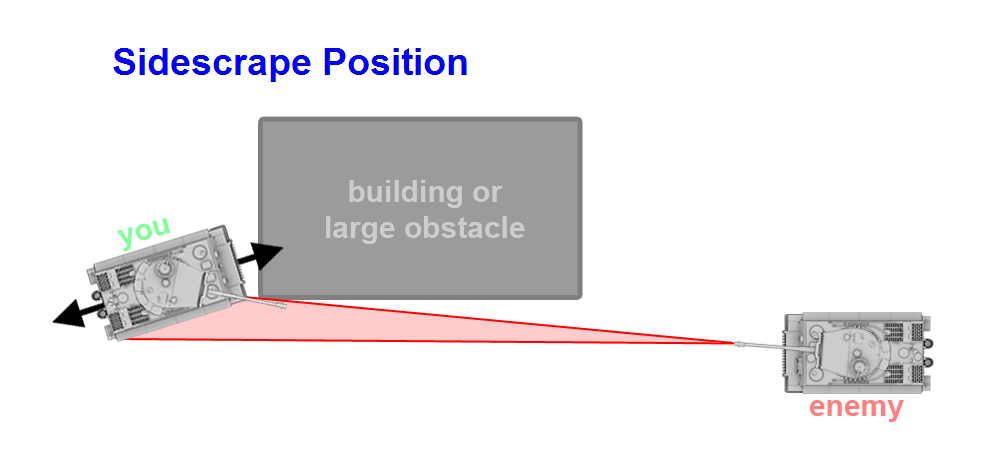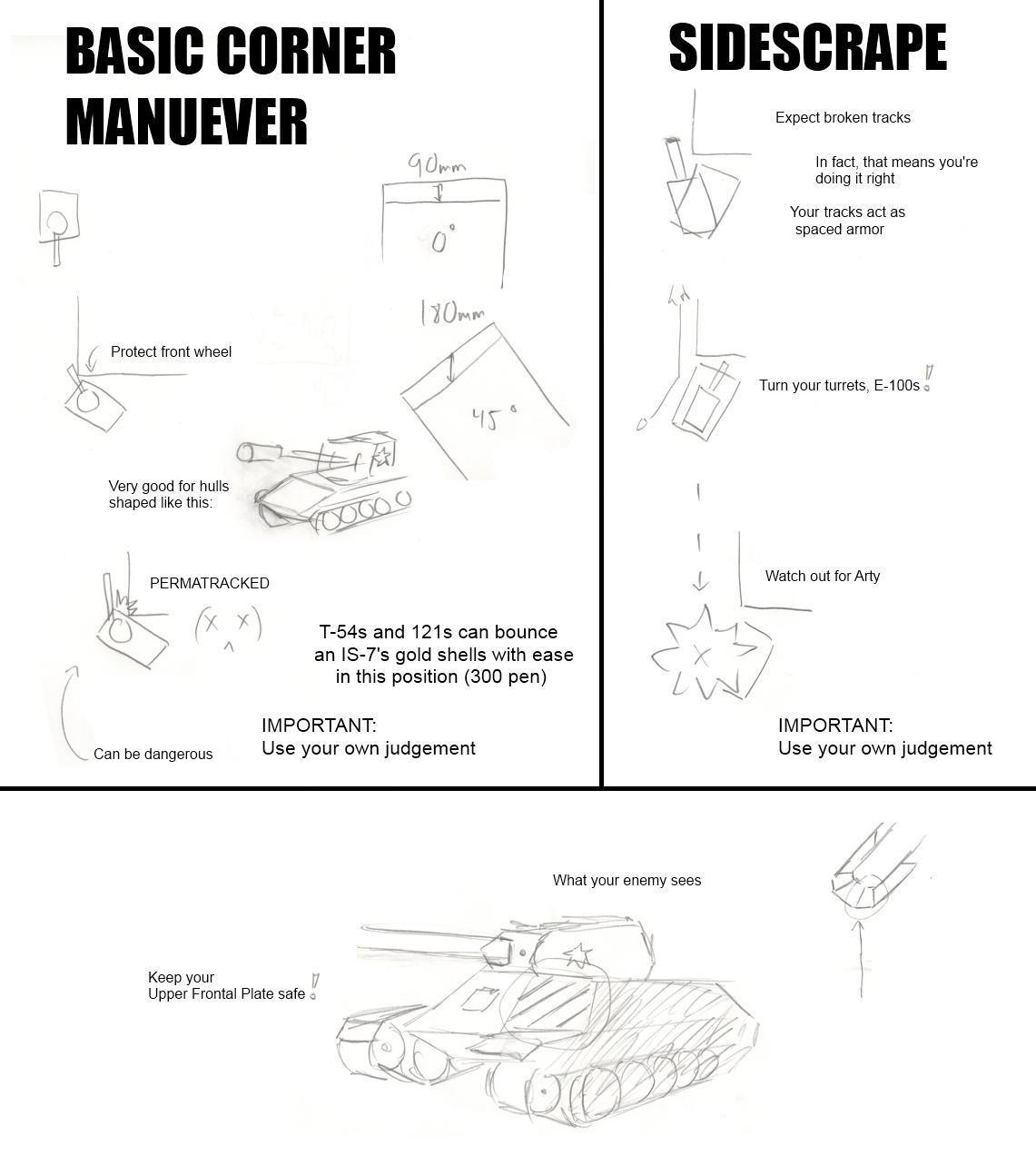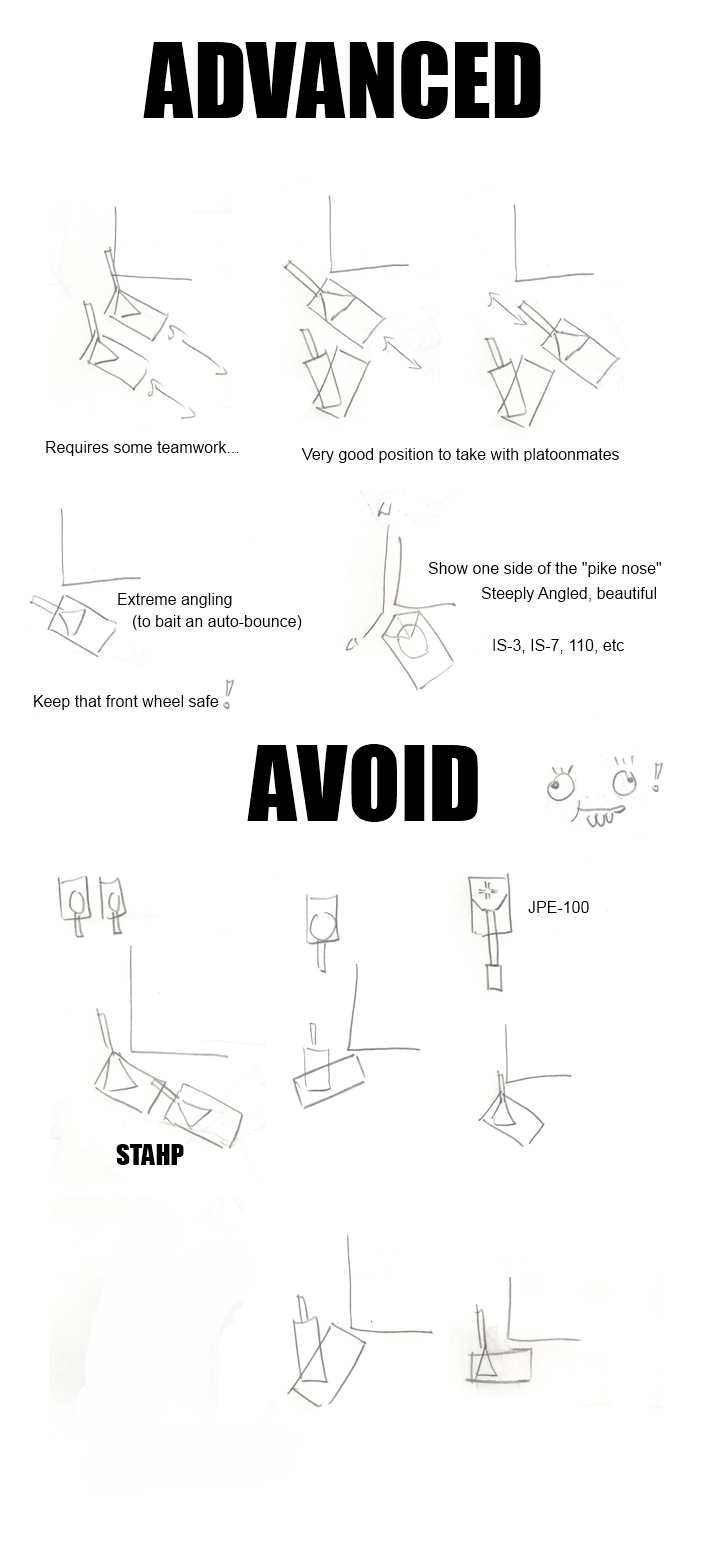Difference between revisions of "Tactics: Sidescraping and Reverse Angling"
| Revision as of 21:56, 1 May 2014 | Revision as of 03:23, 20 July 2014 Updated with Append to reflect unfinished state | |||
| Line 1: | Line 1: | |||
| + | {{Append}} | |||
| + | ||||
| [[File:Sidescrape Position.png]] | [[File:Sidescrape Position.png]] | |||
Revision as of 03:23, 20 July 2014
| |
This article requires additional modification. The design and/or content of this article do not conform to wiki standards. |

An alternative to moving the front of your tank slightly around a corner, firing, and then backing up again ("Peek-a-boo") is to maneuver your tank into what's referred to on the forums as the Sidescrape Position. In this position you expose the side of your tank rather than the front, at an angle that presents a very high chance of a ricochet. You also do not move in and out of cover. On German tanks especially, this avoids exposing the front of the tank and potentially taking engine hits. Under many circumstances, this position offers more protection. Just be aware of the enemy(ies) you're facing and the potential downsides.
The reverse angling technique is a variant in which the tank is presenting with its rear oriented towards the opponent. It is normally used on front-mounted turret tanks in order to create better angling for sidescrapes. A good example of tanks suited for reverse-angles is the T29, T32, and T34 heavy tanks.
The main downsides are:
- It can only be used when alone.
- You can't move completely behind cover between shots.
- The entire side of your tank is exposed to artillery splash damage.
- The angle doesn't help much against HE rounds.
Page under construction.
This page is the primary home for both 'sidescraping' and 'reverse angling' techniques, content should be added here, not the tactics page, in order to reflect that.

